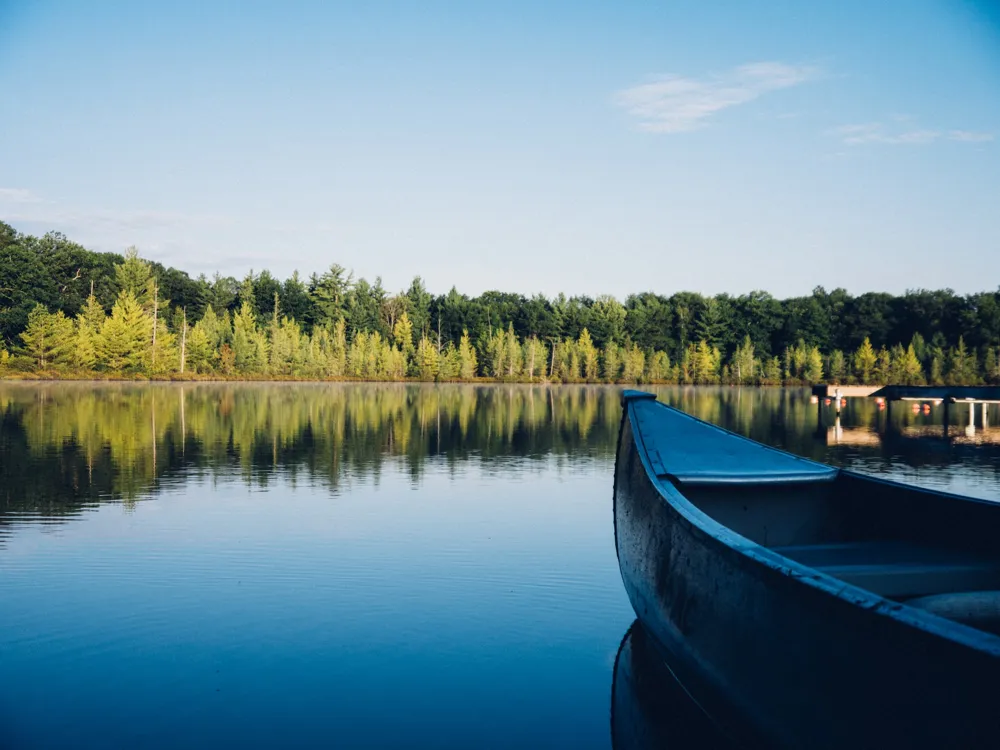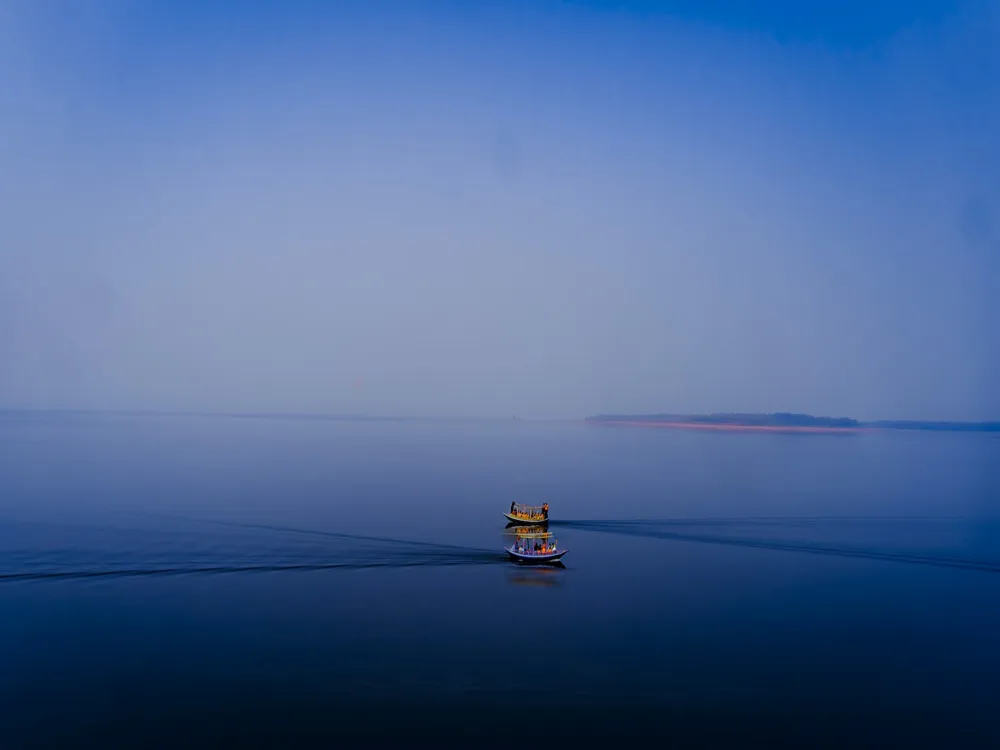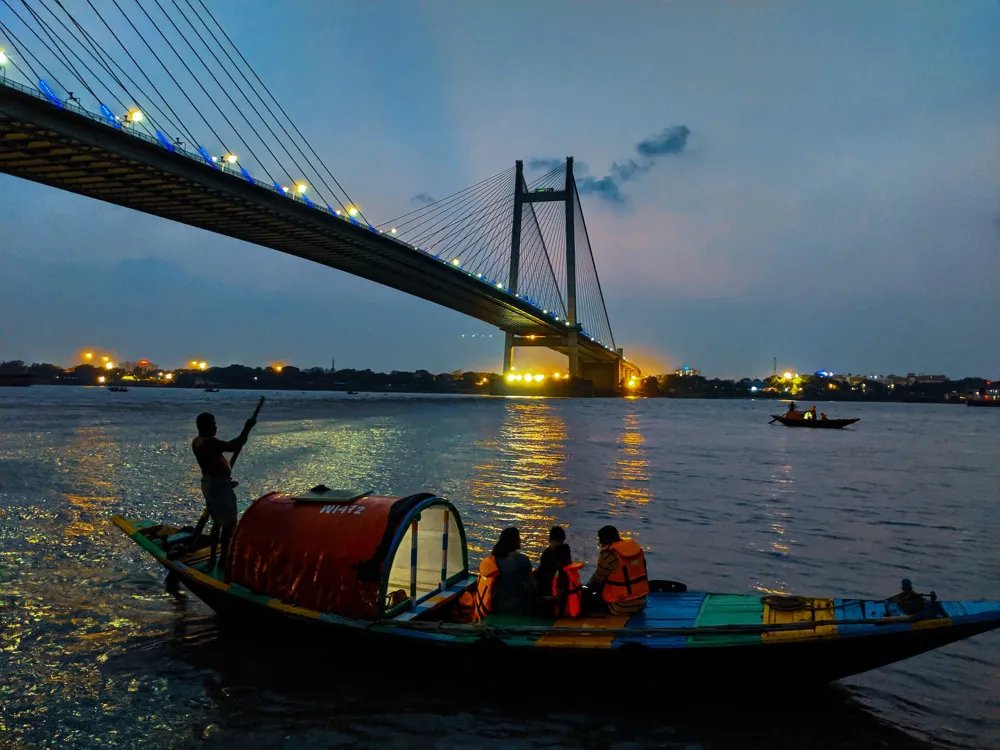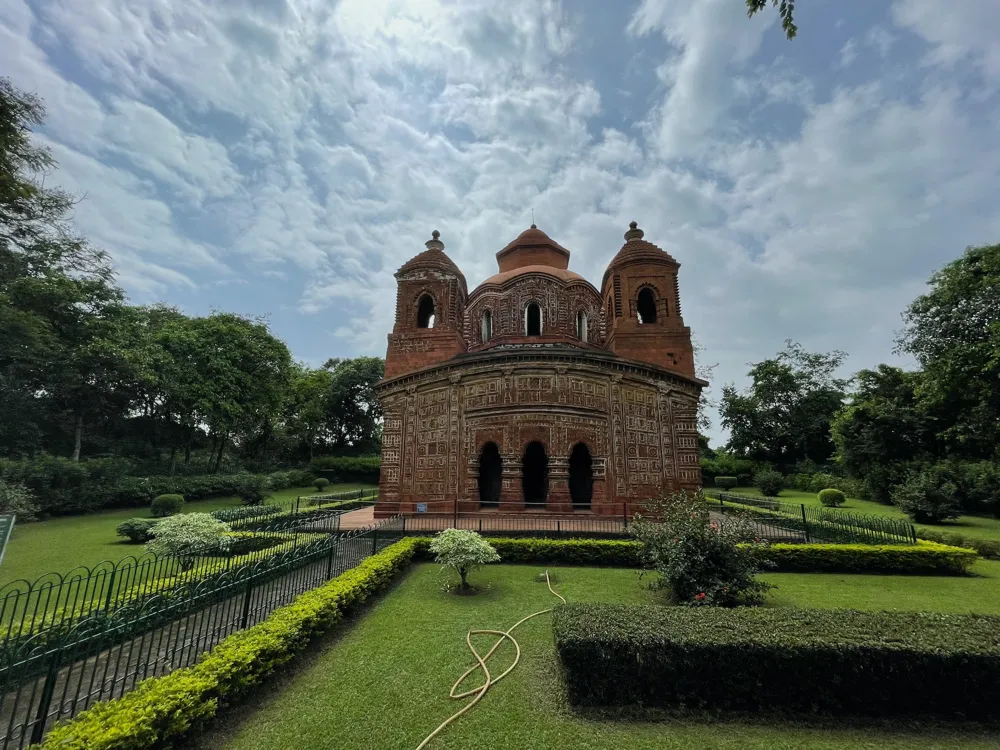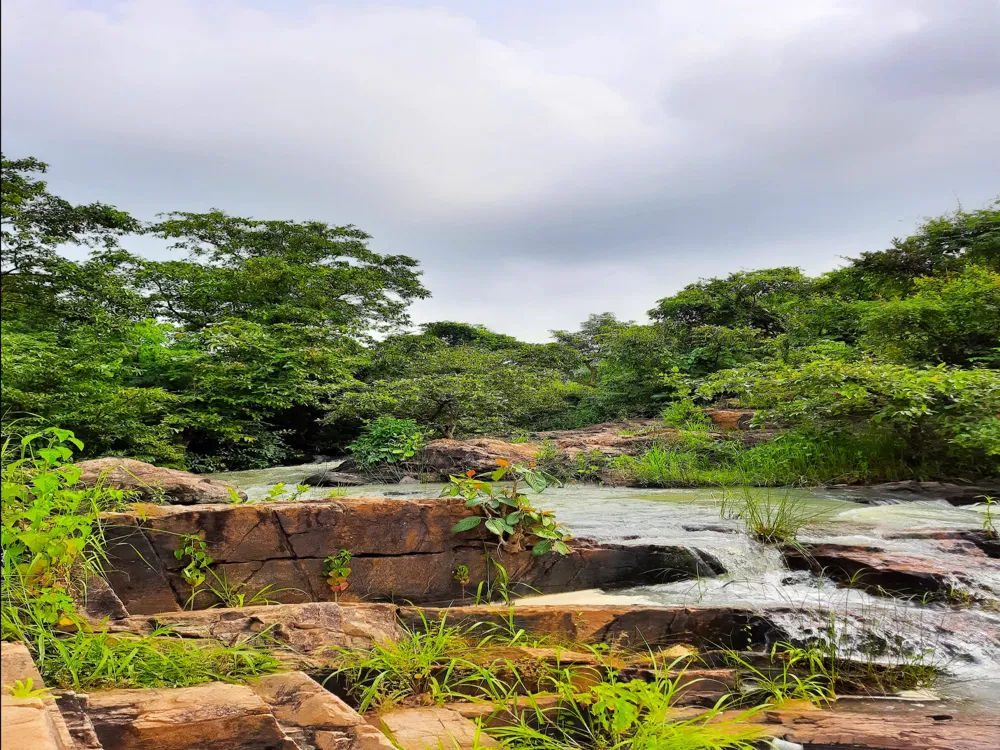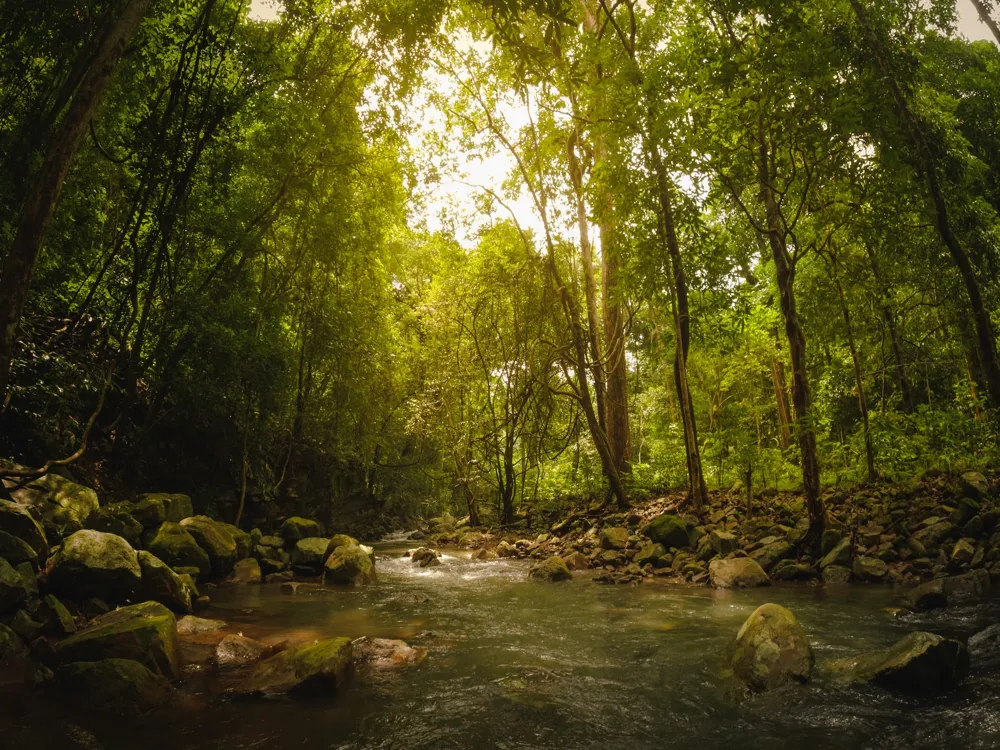Dimna Lake, nestled in the outskirts of Jamshedpur in the state of Jharkhand, India, is a pristine reservoir and one of the main sources for the city's drinking water. Surrounded by the breathtaking Dalma Hills, this man-made lake was constructed by the Tata Steel Company and has since become a popular destination for both locals and tourists alike. The lake's serene beauty, coupled with its rich flora and fauna, make it an ideal spot for nature lovers and photography enthusiasts. The lake is not only a source of water but also a hub of recreational activities. It offers opportunities for boating, rowing, and fishing, making it a perfect getaway for families and adventure seekers. The lush green surroundings and the tranquil waters provide a peaceful escape from the bustling city life. The area around Dimna Lake is also popular for morning walks, jogs, and picnics, attracting a diverse group of visitors throughout the year. Moreover, Dimna Lake plays a significant role in the region's ecosystem. It is home to various species of fish and attracts numerous migratory birds during certain seasons, adding to its natural charm. The lake's ecosystem is a testament to the harmonious coexistence of human development and nature. As a crucial water reservoir, Dimna Lake is a fine example of sustainable environmental practices, balancing the needs of the city with the preservation of natural beauty. The architecture of Dimna Lake is a marvel of engineering and design, reflecting a blend of functionality and aesthetics. The lake was meticulously planned and constructed to serve as a reservoir for potable water while maintaining the ecological balance of the area. The design of the dam, which holds the lake, is a testament to the engineering prowess of the early 20th century, combining durability and efficiency. The construction of Dimna Lake involved the creation of a dam across the Dimna stream, a tributary of the Subarnarekha River. This earthen dam was built using the latest technologies of the time, ensuring its longevity and effectiveness in water conservation. The design also took into consideration the surrounding landscape, making sure that the lake blended seamlessly with the Dalma Hills and the lush greenery. Furthermore, the architectural design of Dimna Lake prioritizes environmental sustainability. The reservoir is designed to collect rainwater and store it, ensuring a steady supply of water for Jamshedpur. The spillways and sluices are strategically placed to manage water levels and prevent flooding, especially during the monsoon season. This thoughtful design highlights the importance of harmonizing architectural development with environmental conservation. Dimna Lake is best visited during the cooler months from October to March when the weather is pleasant. This period avoids the heavy monsoon rains and the scorching summer heat, making outdoor activities more enjoyable. Visitors can indulge in various activities like boating, fishing, and picnicking. Nature walks and bird watching are also popular due to the diverse flora and fauna around the lake. Always adhere to safety guidelines, especially when engaging in water activities. It's advisable to visit in groups and inform local authorities if you plan to venture into less crowded areas. Maintain the cleanliness of the lake and its surroundings. Avoid littering and respect the natural habitat of the wildlife in the area. Dimna Lake is easily accessible from Jamshedpur city. Visitors can drive to the lake, which is about 13 kilometers from the city center. Public transport like buses and taxis are also available. For those coming from other cities, the nearest airport is in Ranchi, and the nearest railway station is in Jamshedpur. From these points, local transport can be used to reach the lake. Read More: Overview of Dimna Lake, Jamshedpur, Jharkhand
The architecture of Dimna Lake
Tips When Visiting Dimna Lake
Best Time to Visit
Activities to Enjoy
Safety Precautions
Respect the Environment
How To Reach Dimna Lake
Dimna Lake
Jamshedpur
Jharkhand
NaN onwards
View jamshedpur Packages
Weather :
Label : Must Visit
Tags : Lake
Timings : 9:00 AM - 6:00 PM
Time Required : 2-3 hrs
Entry Fee : No entry fee
Planning a Trip? Ask Your Question
Jamshedpur Travel Packages
View All Packages For Jamshedpur
Top Hotel Collections for Jamshedpur

Private Pool

Luxury Hotels

5-Star Hotels

Pet Friendly
Top Hotels Near Jamshedpur
Other Top Ranking Places In Jamshedpur
View All Places To Visit In jamshedpur
View jamshedpur Packages
Weather :
Label : Must Visit
Tags : Lake
Timings : 9:00 AM - 6:00 PM
Time Required : 2-3 hrs
Entry Fee : No entry fee
Planning a Trip? Ask Your Question
Jamshedpur Travel Packages
View All Packages For Jamshedpur
Top Hotel Collections for Jamshedpur

Private Pool

Luxury Hotels

5-Star Hotels

Pet Friendly











